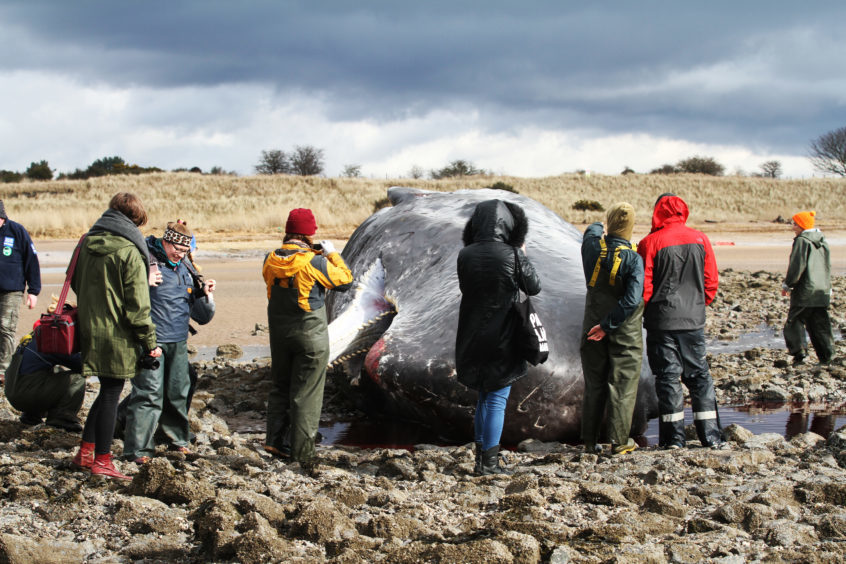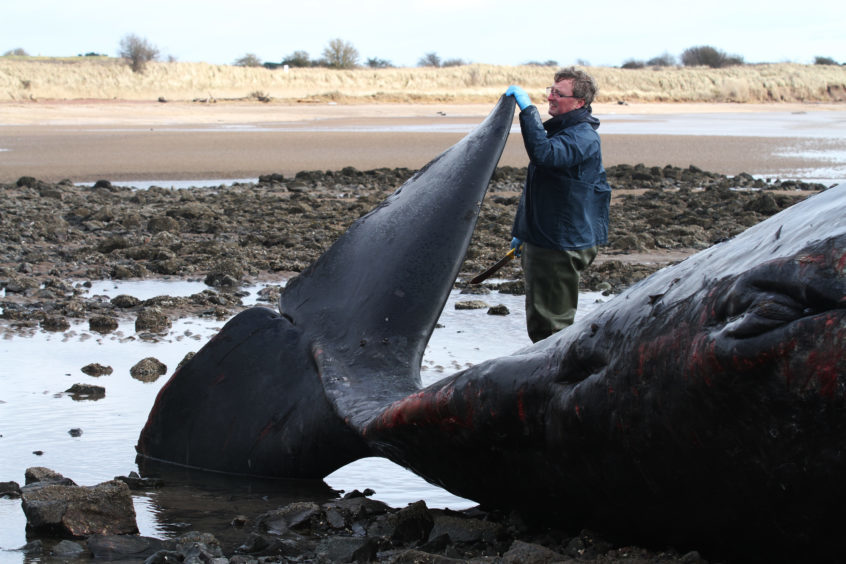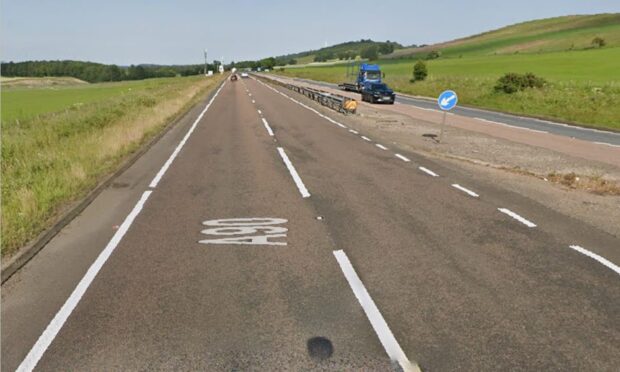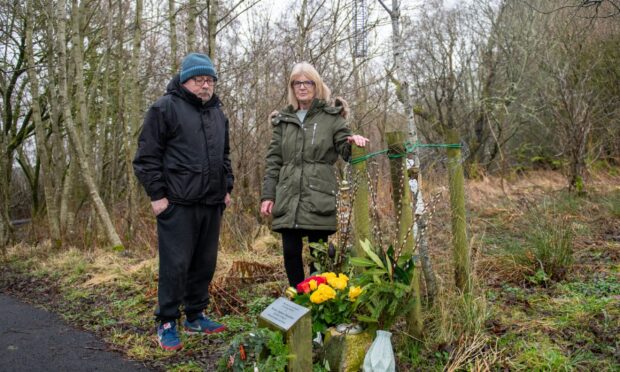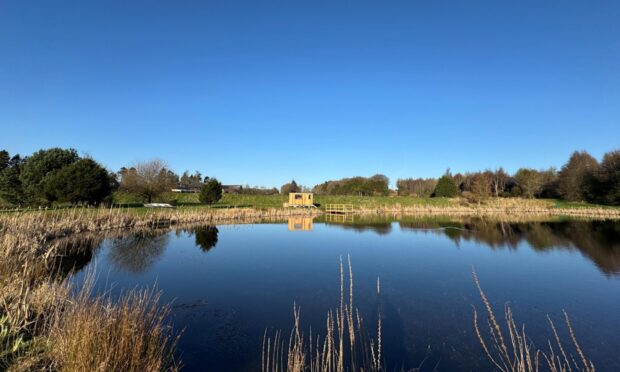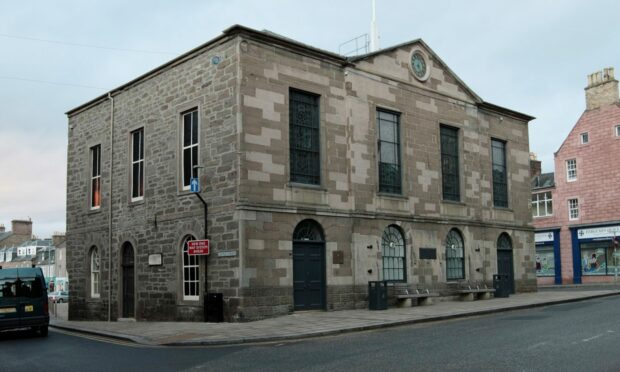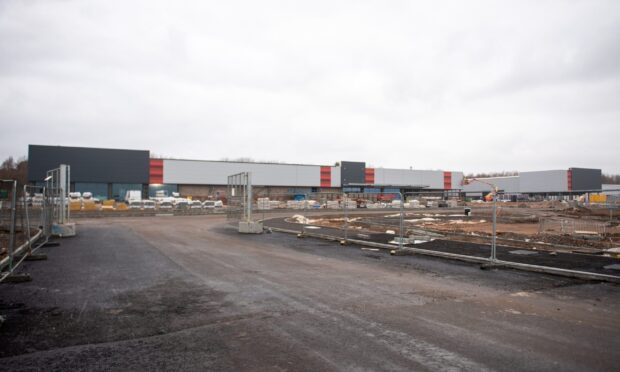Signs are being erected to warn beachgoers to steer clear of the uncovered remains of a dead whale which are causing a stink in Monifieth.
The animal beached itself on a stretch of shoreline between Monifieth and Barry Buddon last March. It died shortly after becoming trapped out of the water.
Angus Council buried the carcass, saving the cash-strapped local authority a huge bill for disposing of the body in an alternative manner, such as incineration.
However, dog walkers in the town say the shifting sands on the beach have uncovered the remains, leaving a “real heavy smell of decay and rotten flesh” wafting over the stretch of beach.
Theresa Kennedy, 59, a funeral celebrant, said the smell made passers-by “nauseous” as well as being “a public health hazard.”
She said: “You couldn’t recognise what it was at first. I noticed the dogs started digging in a certain area in the beach. Then one of the dogs started rolling in it.
“There was some kind of plastic hessian-style bags over the remains that had started to spread through the sand.
“You can smell it 300 yards before you reach it. We zip our jackets up over our mouths as we pass by as it’s that unpleasant.
“I don’t want to think about what kind of germs are down there.”
>> Keep up to date with the latest news with The Courier newsletter
Local people understand environmentalists were keen on the whale’s burial so they could dig up the bones for further study when the carcass had rotted away.
Theresa called on the council to cover the burial site with concrete to prevent the remains from becoming exposed, tackle the smell, and prevent any further health hazard from developing.
“There is talk they’re going to put up a cordon, but that will be no use. You will still be able to smell it.
“It was a big whale, so they can’t dig it up again. I would hate to think about the state of decomposition.
“We put stones over the site and tried to build a little cairn. The tide came in and washed the stones away. So it needs to be a big concrete slab to cover it.”
A spokesman for Angus council said it was in talks with the Ministry of Defence, which owns part of the land, about putting up warning signs.
“Consultation with various relevant agencies including SEPA and the Scottish Marine Animal Stranding Scheme, established that burying the whale carcass was the most practicable option to take,” he said.
“We are aware that parts of the carcass have emerged to a minor extent recently and we are consulting with the MoD, which owns part of the land, with regards to taking suitable action.”
